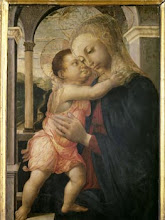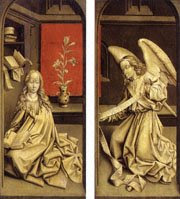









Gerard Terborch
(1617-1681)
This Dutch painter was born in 1617 in Zwolle into the family of an artist, Gerard Terborch the Elder, who became his first mentor. Then, in 1634, Gerard was apprenticed to Pieter de Molyn in Haarlem, where he also experienced the influence of Frans Hals. He became a member of the Haarlem St. Lukas Guild in 1635 and soon started off on his 5-years travels, visiting England, Italy and France. In 1635, in London, he probably got acquainted with portraits by Van Dyck; in 1640-41 he visited Italy and Spain, where he was admitted by court and painted King Philip IV. In Spain Velazquez's work made a deep impression on him. In 1646-48, Terborch visited Münster (Westphalia), where he painted “The Treaty of Westphalia” (Peace Treaty of Münster), now in the National Gallery, London, which marked the end of the Thirty Years’ War. The composition of 80 figures combines the features of portrait and historical painting. Gerard Terborch belongs to the few Dutch painters of the European school. He painted genre pictures and portraits, which he dated very seldom. In his early period (1630s-50s) he often depicted the scenes of everyday life of soldiers and entertainers: examples. The picture The Knifegrinder's Family belongs to the same period, it shows the miserable life of an artisan and is the only painting of such character in all his work. In 1654 the painter settled at Deventer. The characters of Terborch works changed, the life of the rich families became his main subject. His pictures are elegant and marked with restraint lyricism, which sign off his work among other Dutch genre painters. The masterpieces of Terborch of The Fatherly Admonition, The Concert, Glass of Lemonade, and others. The artist died in 1681 at Deventer.
Bibliography: Holland Genre Painting. XVII century. by E. Fehner. Moscow. Izobrazitelnoe Iskusstvo. 1979. Painting of Western Europe. XVII century. by E. Rotenberg. Moscow. Iskusstvo. 1989. Painting of Europe. XIII-XX centuries. Encyclopedic Dictionary. Moscow. Iskusstvo. 1999.
TERBORCH, Gerard
(b. 1617, Zwolle, d. 1681, Deventer)
Biography
Terborch (also spelled Ter Borch, or Terburg), Dutch Baroque painter who developed his own distinctive type of interior genre in which he depicted with grace and fidelity the atmosphere of well-to-do, middle-class life in 17th-century Holland.
Terborch's father had been an artist and had visited Rome but from 1621 was employed as a tax collector. Surviving drawings made by the young Terborch in 1625 and 1626 are proudly inscribed and dated by his father. In 1632 Gerard was in Amsterdam, and in 1634 he was a pupil of Pieter de Molyn in Haarlem. He visited England in 1635, Rome in 1640, and from 1646 spent two or three years in Münster, Westphalia, where the peace congress was in session. The masterpiece of this period, The Swearing of the Oath of Ratification of the Treaty of Münster (1648), portrays the delegates of Holland and of Spain assembled to sign the peace treaty. After a stay in Madrid he finally returned to his own country at the end of 1650, and in 1655 he settled in Deventer.
Terborch's works consist almost equally of portraits and genre pieces. His characteristically delicate technique can be appreciated in the portraits, which are painted on a small, almost miniature scale, though many of them are full-length. In colour they tend to be subdued, due largely to the sober costume of the times, but by subtlety of tonal gradations and mastery in rendering diverse surface textures he was able to achieve an extraordinary richness of effect. Particularly characteristic is his manner of rendering satin. His superb colour sense appears to greater advantage in genre subjects, though it is always employed with masterly restraint. In his earlier years he painted many guardroom subjects in the manner of Pieter Codde and Willem Duyster, but later, from about the time when he finally settled in Holland, he painted calm, exquisitely drawn groups, posed easily and naturally against shadowy backgrounds and imbued with an almost aristocratic elegance that is unique among Dutch painters of his time. Among many fine examples of Terborch's art are The Letter, The Concert, and Paternal Admonition.





























.jpg)


.jpg)











